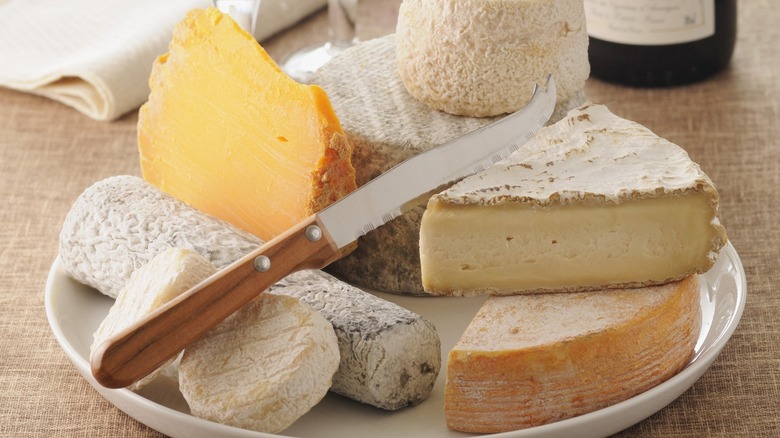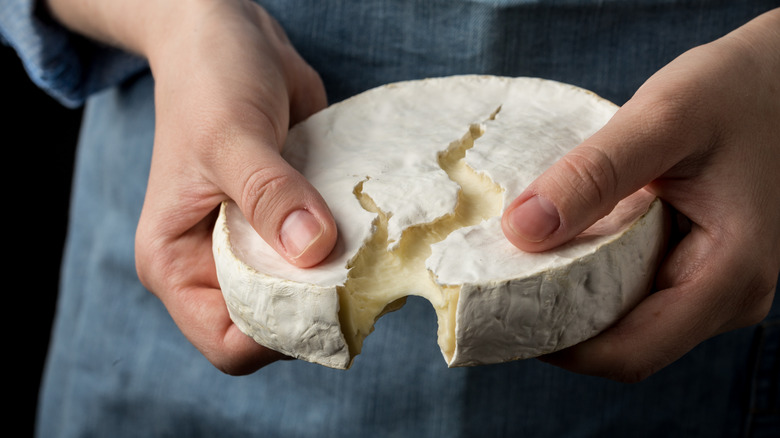You Can Eat All The Parts Of A Cheese, According To French Etiquette
Truth be told, there are few things in life more enjoyable than eating cheese. With more than 1,800 different varieties of cheese on the planet, according to Dairy Farmers of Wisconsin, there's certainly no shortage when it comes to finding a few favorites. And if you want to enjoy cheese like a bona fide turophile, it's important to achieve a full sensory experience in each and every bite. And we mean every bite ... including the rind.
Of course, not all cheeses are created equally, meaning not all have rinds. Furthermore, not all rinds are meant to be ingested. Many popular kinds of cheese, including Brie, Taleggio, Gruyère, Camembert, and Limburger, are encrusted with a firm or flexible rind. While it may be tempting to peel off the malleable covering and discard it, do what you can to resist the temptation. In fact, expert fromagers state that you can and should indeed be consuming the rind — in most cases, at least. After all, some cheeses have bloomy, seasoned, coated, infused, and washed rinds that are meant to be eaten in their entirety. Here's the rind rundown.
Lots of cheese rinds are totally edible — and quite delicious
If you've lived your whole cheese-eating life thus far believing cheese rinds were like the wrapping paper used to conceal a real gift, it's never too late to learn something new. There are a few rules of thumb.
According to French à La Carte, a French language school in Paris, eating the rind alone is a ritual worth savoring. Plenty of cheese rinds — "croûtes de fromage" in French — are totally edible. The rinds of many soft cheeses, including goat cheese and blue cheese are often considered a tasty delight. Additionally, wrinkly, crusty, and flavored rinds are fair game. As for the waxy rinds of hard cheeses, such as Gouda and Edam, feel free to toss the tough outer layer.
While rinds act as protective coatings of the rich, buttery, nutty, creamy good stuff we know and love, this isn't the only purpose they serve. Christine Clark, Certified Cheese Professional by the American Cheese Society, shares with Cheese Professor that rinds are often flavored by the cheesemaker to give them an extra flair. For instance, a Spanish goat cheese called Cabra Romero boasts an edible rosemary-flavored rind. She also explains that some rinds can be used in cooking.
At the end of the day, it's a personal decision whether or not you eat the rind. However, in France, scrapping it is the equivalent of cutting the crusts off your sandwiches, i.e., it's viewed as a juvenile move, per Am I French Yet?

